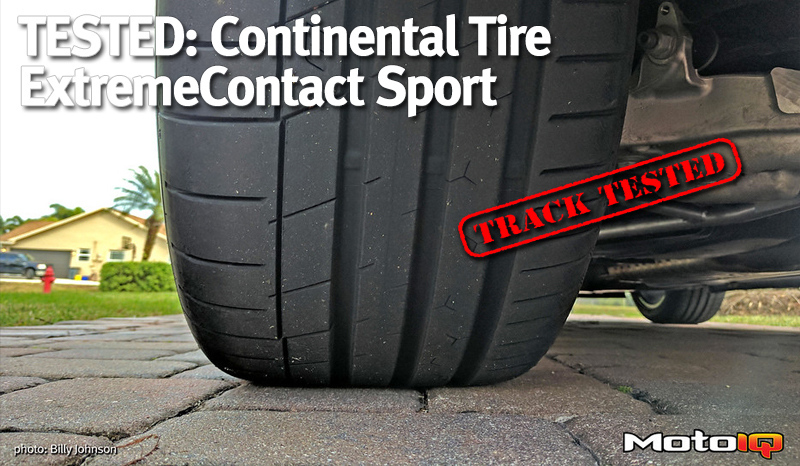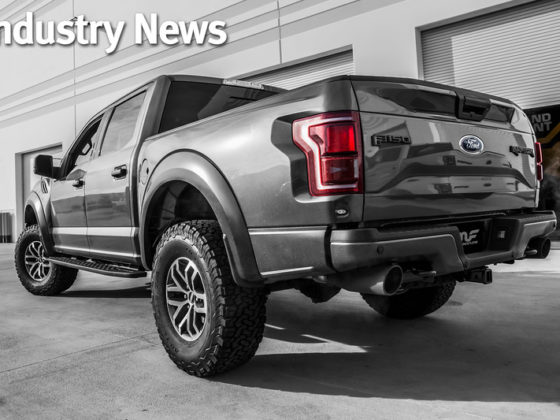
The Extreme Contact™ Sport features a high strength 2-ply material with a “Sport Sidewall Insert” in the lower sidewall to improve steering response, prevent the tire from rolling over, and generate more grip while improving how the tire wears. These changes increased handling stiffness by 86% over the DW, while the ride stiffness (vertical stiffness) was only increased 6%. This is a huge increase in steering response and performance while virtually not affecting the ride quality.
Unlike the PSS, which uses two different compounds, an outer shoulder with a dry-grip focused compound, and a more rigid, wet-oriented compound to improve steering feel and wet grip; Continental felt that they can get the best overall performance by using their new compound across the entire tread of the tire.
Despite having an identical UTQG Treadwear of 340 (which is COMPLETELY USELESS – Read here to understand why), Continental improved the ExtremeContact™ Sport’s tread life by 20% over the DW. Continental admits that the official UTQG test is not sophisticated, especially compared to their own internal development testing which also takes into consideration how evenly the tire wears across the surface of the tire. They claim the new Sport will wear more evenly due to the changes of its construction that give it a more consistent footprint, especially when cornering.
As far as UTQG goes, consider that if you put wider tires with a larger (outer) diameter tire on your car, the cars weight remains the same, but you greatly increased the volume and total surface area of the tire as well as reducing the amount of revolutions per mile. This increase dissipates the load and weight across a larger area which results in reduced heat, reduced wear, and longer tire life.
It is really impressive that the ExtremeContact™ Sport is backed by one of the strongest warranty programs and service contracts in the industry, Continental’s new “Total Confidence Plan”. Under the plan this UHP tire has a 60-day customer satisfaction trial (or 2/32” of treadwear) and 12-month road hazard coverage (or first 2/32”) as well as a 72-month manufacturer’s limited warranty program. Also included is a 30,000-mile limited mileage warranty and three-year flat tire roadside assistance (or towing up to 150 miles). The ExtremeContact™ Sport comes in 71 sizes, including 17 new sizes, ranging from 15” – 20” wheel diameters with a W and Y speed rating.

Inside the tire, the belt angles have been adjusted and more effort has been put into optimizing each tire size they make to ensure consistent construction. Across the industry, it’s common practice to modify the original layout and construction of a tire due to the challenges of certain tire sizes. This means that some sizes do not handle and perform as designed and specified by the engineers because of more or less belts, reinforcements, plys, etc.. Continental is committed to putting a larger effort and focus in to engineering and tuning each size they offer to minimize the differences from the ideal design of the ExtremeContact™ Sport.<

Like the ExtremeContact™ DW, the ExtremeContact™ Sport offers the “DW” Quick-view Indicator that keep the customer informed as the tire wears and has less tread depth and hydroplaning performance.
-The “W” disappears at 4/32nds – Continental says this is an indication to be more careful in wet conditions due to less hydroplaning resistance, and to consider replacing the tires. There is still good wet traction since compound is the same through entire life of tire.
-The “D” disappears at 2/3nds – Continental says this is past the legal limit in most states and the tires should be replaced.
Street and Wet Weather Testing
We put nearly 1,000 miles on the ExtremeContact™ Sport and are very pleased that the general ride quality and ‘street-ability’ of the tire was virtually unchanged from the DW. The improvement in steering response and precision was immediately noticeable from the first corner I took when leaving the tire shop. This huge improvement catapults the Sport into the realm of the Pilot Super Sport as a tire you would want to take on your favorite twisty mountain drive or occasional track day. While a great street tire in almost every regard, the DW’s lack of steering precision left a lot to be desired in corners.
On the street, the ExtremeContact™ Sport leaves nothing subjectively on the table to the PSS in terms of steering response, precision, communication, ride quality, comfort, noise, wet grip, or dry grip. Steering response is very important in a performance tire and due to the improvements in the Sport, every aspect of the driving experience is far better than the outgoing DW.
Ride quality and comfort is subjectively identical to the DW with no increase in ride harshness. After all, there’s only an 6% increase in vertical stiffness and if you can feel that, you’re probably more sensitive than most tire testers. Noise is perceptively identical to the DW with no noticeable increase in an already extremely quiet tire.
During a few hundred-mile road trip, we had the opportunity to test the ExtremeContact™ Sport in a typical Florida torrential downpour. Florida rains can onset out of nowhere and can create long strips of deep standing water. Under ‘closed conditions’ we ran the Sport at well above highway speeds through deep water, and the tire exhibited excellent hydroplaning resistance and retained a significant amount of control and grip. Like the DW, the Sport was very confidence inspiring under these conditions. Without laboratory tests, it’s impossible to quantify any losses in hydroplaning resistance from the DW since the tire performed so well.
Also “under closed course conditions”, we tested the wet weather cornering performance of the Sport. Lateral grip, stability, feel, and breakaway characteristics were impressive. The Sport gave the driver so much confidence when cornering in the wet, I would be very interested in testing this tire as a wet tire for club racing that requires ‘street’ tires.
While Continental boasts the DW’s superior hydroplaning resistance and better wet weather grip than the Michelin PSS, I must admit as an owner of both tires, that the difference is miniscule. The PSS is one of the best wet weather tires out there and in order to validate that claim, I would need more defined laboratory conditions and testing procedures than owning and driving on both tires on my daily drivers. While the PSS’ steering response easily overshadows the DW, I would probably have to give it to Continental that the DW has slightly better hydroplaning resistance in deep water. With the Sports’ increased steering response now on a similar level as the PSS, I would have to trust Continental’s claims that it also has better hydroplaning resistance over a PSS, but in real world conditions they are all just so good in the wet that no other tires come to mind that even come close.



